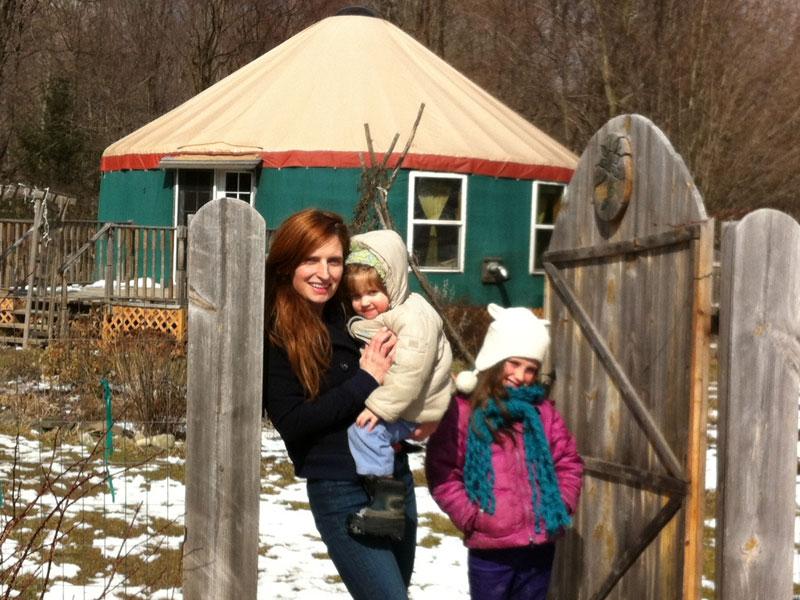Within the 30-square-foot diameter of Michelle Menter’s yurt, visitors can see the roof ripple in the wind, hear rain patter against the treated canvas and stargaze out the domed skylight if they rent the eco-friendly dwelling.
In 2008, Menter, owner of Climbing Vine Cottage in Newfield, converted the two bedroom yurt from a house for preschoolers to be rented for $115-$195 per night and $750-$1,290 per week catering to couples, families and international travelers year-round.
This year marks the fiftieth anniversary of the American yurt, but these one story, round-tented structures with lattice wood walls covered in fabric were used as early as 400 BC.
“It originated in Mongolia,” Menter said. “A super cold environment still [with] nomadic type of people, and they had whatever fleecy animal…maybe a yak, so there’s ample fur to make wool and the whole outer cover is this massive felted creation that’s super warm and insulated.”
Menter’s yurt is equipped with a snow and wind load kit because of Ithaca’s environment, but yurts can be purchased and adapted to any geography.
“[Yurts come in] a lot of different varieties, anywhere from the traditional primitive Mongolian yurt up to what we sell, which is an engineered yurt that meets a building code,” Colorado Yurt Company marketing manager Ivy Fife said. “We’re catering more toward something people can get permitted and use as their primary residence.”
Last June, Steve Gabriel, a Cornell University cooperative extension aide who teaches about permaculture and conducts research on agroforestry, built and moved into a 27-square-foot yurt 10 miles west of Ithaca with his girlfriend.
Sustainability and affordability are the main draws, Gabriel insists.
“If you wanted to build a simple cabin…that might be comparable [to a yurt] that’s 600-800 square feet, you’re easily taking about having a $40,000-50,000 investment,” Gabriel said. “We spent a little over $20,000 –– so maybe half the cost of building a home.”
Menter respectively spends around $800-900 a year on wood pellets for heat, $25 a month on electricity and $35-50 a month on propane, depending on her visitor’s usage.
Gabriel said the flexibilities these structures allow are a big appeal since yurts can act as transition spaces, and temporary and permanent dwellings; amenities vary according to preference.
It is their geometry that make them durable and capable of withstanding 110 mph winds, only needing roof and fabric replacements every eight to 15 years. Fife said engineered yurts such as these are the current trend.
The Colorado Yurt Company has a production capacity of about five yurts per week, which they usually meet.
“Most of our orders are within Colorado, [and] New Mexico, in the west — they’re much more popular in the west but then there are other pockets of places like Canada in the last few years and upstate New York for some reason.”
Sustainability is likely the reason for the draw to yurts in Ithaca, Gabriel said. In New York’s cold climate, almost 50 percent of a person’s energy use comes from heating their home. However, Gabriel said living in a yurt does not mean abandoning modern conveniences.
“People have chosen, sometimes when they live in yurts, to go off technology and what we try to tell people is it’s not really necessary,” Gabriel said. “You can have cold food, electricity, water and hot water; if you’re living like the way we do, you just have to accept the less of those things –– conserve a little more.”







